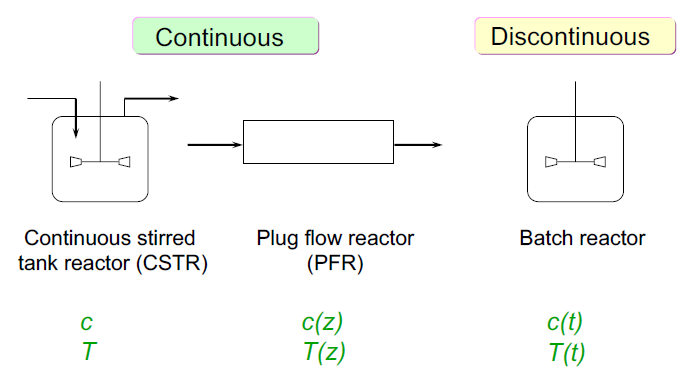

Amajor oil refinery decided to upgrade one of its process units to improveefficiency and increase output. The upgrade involved replacing an aging heatexchanger, modifying pipeline routes, and integrating a new control system.Although the changes aimed to optimize operations, they introduced new risksassociated with equipment compatibility, control system errors, and alteredprocess conditions.
Recognizingthe potential hazards, the refinery implemented a formal Management of Change(MOC) procedure to ensure that all risks were identified and mitigated beforethe modifications were executed. This case study highlights the application ofMOC to maintain safety and operational integrity during major process changes.
Duringthe early planning stages, the project team carried out a detailed riskassessment as part of the Management of Change (MOC) process to ensure safe andefficient implementation of new equipment. This assessment emphasized severalcritical areas of concern. Equipment compatibility was a primary focus,as the new heat exchanger would operate under higher pressures and temperaturesthan the current system, raising potential risks of material degradation andfailure. The team also analyzed process dynamics, recognizing thatchanges in flow rates and heat transfer could influence reaction kinetics,possibly causing dangerous spikes in temperature or pressure. Another keyfactor was the integration of the new control system with the existinginfrastructure, where improper calibration or software malfunctions could leadto system-wide errors or misreading. Lastly, human factors wereaddressed by identifying the need for updated operator training to minimize thelikelihood of errors during operations and to ensure familiarity with the newcontrol interface. Through this comprehensive assessment, the project teamaimed to mitigate risks associated with the planned upgrades. The MOC processmight look a little different depending on the organization, but the core stepsusually follow a similar pattern:
1. Initiation.This is where itall starts. Someone spots the need for a change, like new technology or aprocess update. A change request gets submitted, explaining the”why,” “what,” and “how”—basically the scope,objectives, and potential impacts.
2. Evaluation.Now the proposalgets a deep dive. Teams from different areas (engineering, safety, operations)come together to assess feasibility, risks, costs, and benefits. Riskassessments and impact analyses help figure out if the change is practical andworth pursuing.
3. Authorization.Management stepsin to review everything. They either give the green light, suggest changes, orreject the proposal altogether.
4. Planning.Time to getorganized. A detailed plan is made, covering resources, timelines,communication strategies, and making sure everyone who needs to be involved islooped in.
5. Implementation.This is wherethings actually start happening. The change gets executed while progress istracked. Any hiccups are dealt with, and communication stays open to keepeveryone on the same page.
6. Verification.Afterimplementation, it’s time to see how well things worked out. Did the changedeliver on its objectives? If something went off track, adjustments are made tofix it.
7. Closure.Once everything isrunning smoothly and goals are met, the project is officially wrapped up. Lessonslearned are documented to make future changes smoother.
Therefinery implemented a structured Management of Change (MOC) process toaddress potential risks and facilitate a seamless transition to the upgradedsystem. The process began with comprehensive approval and documentation, wheredetailed records of equipment specifications, process modifications, andcontrol system requirements were reviewed and approved by both engineering andsafety teams. Next, a Hazard and Operability Study (HAZOP) was conductedto assess potential failure scenarios, leading to key recommendations such asreinforcing piping materials, installing additional pressure relief valves, andfine-tuning control system setpoints to prevent deviations. Operatorpreparedness was ensured through hands-on training and simulation exercises,equipping staff to handle abnormal situations effectively. Beforecommissioning, a Pre-Startup Safety Review (PSSR) verified that allsafety systems were functional and that MOC measures were fully executed.Finally, after startup, ongoing performance monitoring and regular audits wereconducted to identify and resolve any emerging issues, ensuring continued safeand efficient operations.
Thestructured application of the Management of Change (MOC) process allowed therefinery to successfully complete its process upgrade without major incidents,yielding several key benefits. One significant outcome was enhanced processsafety, as the upgraded unit operated reliably under the new conditions withoutdeviations or equipment failures. Additionally, operational efficiencyimproved, with the new heat exchanger and control system optimizing heattransfer and flow rates, leading to increased output and lower energyconsumption. Operator performance was also strengthened through extensivetraining and simulations, which reduced the likelihood of human error andensured prompt, accurate responses to process changes. Furthermore, adherenceto MOC best practices enabled the refinery to maintain full regulatorycompliance, meeting all process safety management standards and avoidingpotential fines or legal issues. These outcomes demonstrated the effectivenessof a well-executed MOC process in facilitating safe, efficient, and compliantupgrades.
Thiscase study underscores the vital role of a structured Management of Change(MOC) process in maintaining process safety during major system upgrades. Onekey takeaway is the importance of thorough planning, where documenting andanalyzing all proposed changes allows potential risks to be identified andaddressed early. Equally important is stakeholder involvement, withcollaboration between engineering, safety, and operations teams ensuring thatrisk assessments and mitigation measures are comprehensive. Another criticalfactor is training and preparation, as equipping operators with the knowledgeand skills to manage new equipment and scenarios significantly reduces the riskof human error. Finally, continuous improvement is achieved through ongoing monitoringand feedback after implementation, which helps refine procedures and preventfuture incidents. By adhering to these principles, the refinery demonstratedthat even complex process changes can be executed safely and efficiently,reinforcing the value of proactive risk management.












